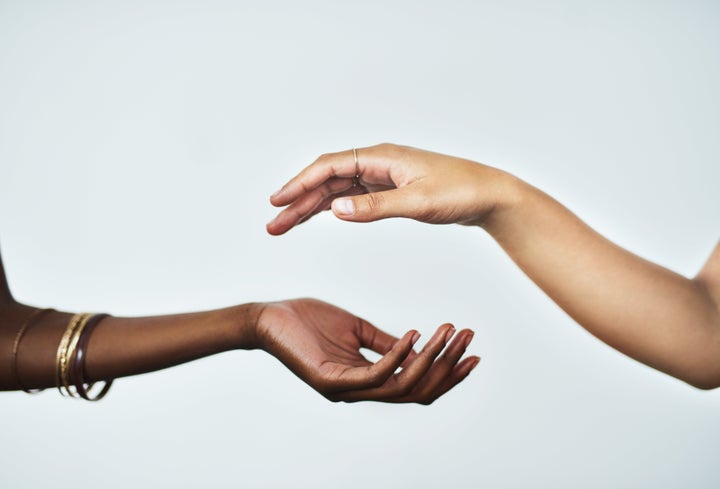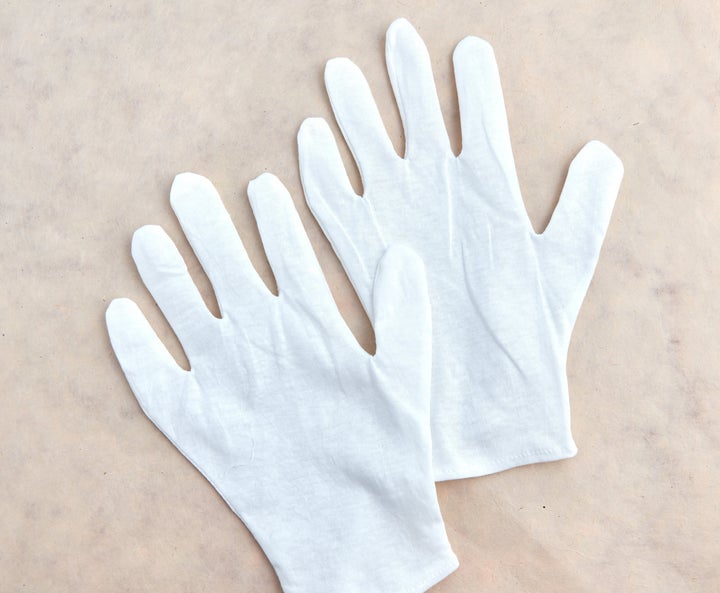
These days, it would surprise no one to hear you’re slathering yourself with asparagus extract balm and snail snot serum before bed every night. But no matter how committed you are to the latest and greatest in beauty trends, sometimes the best routines take a cue from old-school tricks of yore.
For example, if you ever wondered why your grandma’s hands always seemed so soft, it was probably from donning a pair of white cotton gloves every night — not because she needed to be ready for a 2 a.m. tea party, but because she wore fancy creams under the gloves, letting her skin absorb them completely.
We spoke to dermatologists about how and why this routine works, and how to make it work in the 21st century.
FYI, the skin on your hands needs extra care
Your hands can take a beating from weather, regular washing and the frequent use of hand sanitisers. If you have a skin condition like eczema, psoriasis or allergic contact dermatitis, they can become especially dry.
It turns out that your hands don’t have much to protect them, unlike other body parts. “The major contributing factor to the hands drying out so easily is the lack of sebaceous glands,” said Dr. Regine Mathieu, a dermatologist. “The sebaceous glands produce a substance called sebum, an oily substance that lubricates the skin and helps it to retain moisture.”
“So, the palms of your hands are already susceptible to lack of lubrication,” Mathieu explained. “Once you add in different environmental factors that strip moisture from the skin, they’re even more susceptible [to] dryness.”
Why the cotton glove method works
The cotton glove method beloved by grannies is also one that dermatologists still recommend. “Treating the hands overnight is a great option, because it allows you to soften the skin when you’re not using your hands,” explained dermatologist Dr. Josh Zeichner.
“It helps to maximise the effectiveness of moisturisers or emollients to deeply hydrate and repair the skin barrier,” said dermatologist Dr. Lauren Penzi. “Gloves help the emollient to stay on, and wearing them overnight helps to drive the moisturiser deeper into the skin.”
“Wearing gloves overnight is one of the most effective ways to boost hydration and support the skin barrier,” said dermatologist Dr. Carolyn Stull. “This can be a helpful technique for those with skin conditions like eczema, as well as for people looking to boost skin hydration and softness.”
And there’s a bonus: Your cuticles will love this, too. As dermatologist Dr. Brendan Camp pointed out, “you’ll also be keeping your cuticles moisturised, which prevents the formation of hangnails, which are really just bits of dried-out cuticles that peel back from the skin around your fingers.”
Not just any gloves will do
There are two things you’ll absolutely need: gloves and a good moisturiser.
First, let’s talk gloves. Plain white cotton ones, like these, are just fine. In fact, they may be better than their fancier counterparts. “There are many products on the market advertised as ‘moisturising gloves,’” Mathieu noted. “I would caution patients to make sure that they’re reading labels for ingredients, to make sure there are no irritants in them.”

“You don’t necessarily need special gloves, but it’s important to use cotton gloves that are comfortable to wear throughout the night,” said dermatologist Dr. Hope Mitchell. Whatever you use, don’t keep using the same pair over and over — they need an occasional run through the washer, please. “Dirty gloves could introduce bacteria and potentially lead to irritation or infection,” Mitchell said.
Not digging the cotton vibe? “You can use a nitrile glove to provide even more occlusion, but a cotton glove is best for sensitive skin,” advised dermatologist Dr. Blair Murphy-Rose.
If you (or your sheets) don’t appreciate occasional goop smears, you can always add a protective layer. “I generally recommend a non-latex glove on top of the cotton one, since the cotton often becomes saturated with the moisturiser and may become sticky,” Zeichner said.
Now, for the moisturisers
You’ll need to use a heavy moisturiser, experts agreed. “Opt for a thick, hydrating formula that contains ingredients known to moisturise and repair the skin barrier,” Mitchell said. Ingredients to look for include petrolatum, petroleum jelly, shea butter, glycerin, ceramides and hyaluronic acid. “Ultimately, choose a cream that suits your skin type and preferences,” she said.
“I like Lanolips 101 ointment,” Zeichner said. “It’s made of naturally derived lanolin, the same ingredient that makes sheeps’ wool waterproof.” Another favorite of many of the dermatologists we interviewed was Eucerin Advanced Repair Hand Cream.
How to apply it to your hands
The application process is fairly straightforward, according to Camp. “Soak your hands in lukewarm water for two to three minutes, which saturates the top layer of skin with water,” he said. “Pat your hands dry and apply a thick moisturising ointment.”
“Then put on your gloves, which will improve the penetration of the moisturiser into your skin, keep the moisturizer in place longer, limit the loss of water from the skin, and prevent you from spreading the greasy moisturiser all over your sheets,” he said.
A few cautions
As great as this method can be to improve the condition of your hands, there are some caveats to keep in mind.
“Be sure to use products that are non-irritating and that you aren’t allergic to,” Murphy-Rose said. “It’s always wise to perform a spot test before using a product overnight under occlusion, which refers to the process of covering skin with things like tape, gloves or impermeable dressings.”
“Don’t get cavalier and try this with a retinol or retinoid,” Camp said. “When applied under occlusion, retinols and retinoids can cause more side effects, like skin irritation, redness, peeling and stinging.”
Zeichner advised: “For people with a history of skin allergies, I recommend sticking to fragrance-free moisturisers.”
As always, your dermatologist knows best. If you have any underlying skin conditions, talk to them first. “If you’re experiencing chronic dry hands, especially if there’s cracking, it’s important to visit a dermatologist for the correct diagnosis,” Mathieu said.